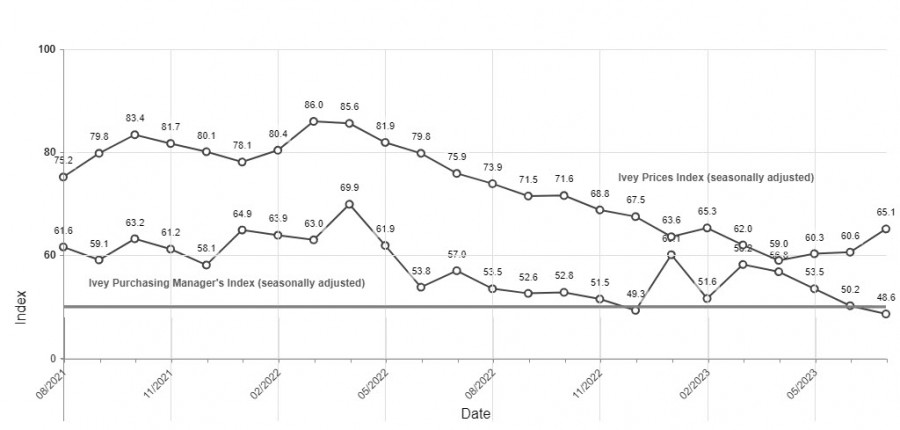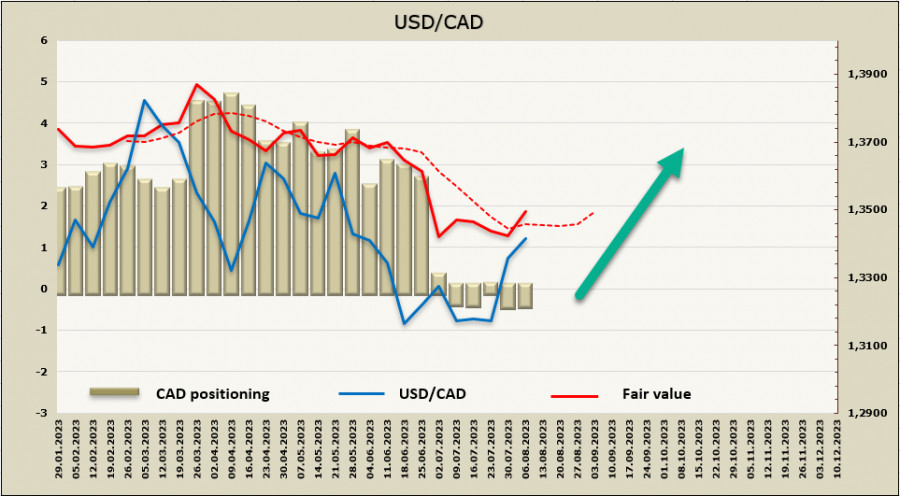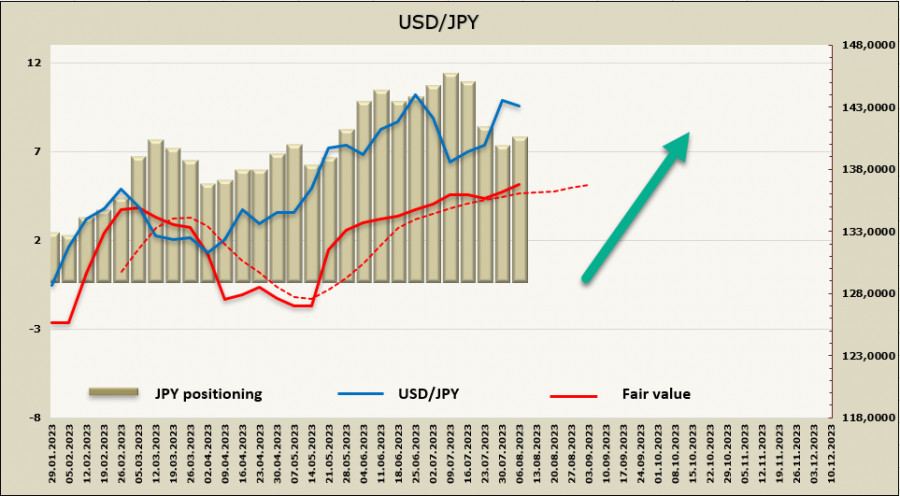Activity in the currency market remains subdued in the absence of significant economic reports, with the main focus on the US inflation report on Thursday, which could lead to more pronounced movements.
Risk assets are still under pressure due to weak data from China, indicating a decline in global demand. Following Tuesday's disappointing external trade data, it was revealed that China's economy has slipped into deflation, with inflation turning negative at -0.3% YoY in July. Consumer prices rarely decrease in China, and given that other countries continue to grapple with high inflation, this is a worrying sign for the global economy as a whole.
The US dollar remains the leader in the currency market, playing the role of the primary safe-haven currency in the current conditions.
USD/CAD
The Canadian dollar has received several sensitive blows and lost its positive momentum against the USD. The labor market report for July showed a decrease in the number of new jobs (-6.4K), while an increase of 21.1K was forecasted, which is particularly noticeable against the backdrop of strong growth in June (+59.9K).
The unemployment rate rose from 5.4% to 5.5%, and more importantly, the average wage growth increased from 3.9% YoY to 5% YoY. Wage growth is usually a bullish factor as it fuels high inflation, but with simultaneous economic slowdown, this factor begins to work against it.
The Ivey Purchasing Managers Index (PMI) for July dipped into contraction territory, hitting a multi-month low of 48.6 points. This indicates an economic slowdown. However, the price sub-index rose to a 5-month high, increasing from 60.6 points to 65.1 points.

The Canadian economy has suddenly lost the advantage that allowed for expectations of sustainable CAD growth. Inflation remains strong, and to contain it, it is logical to anticipate further actions by the Bank of Canada. These expectations are in favor of CAD strengthening. However, simultaneously, a slowdown in activity with further tightening of monetary policy could lead Canada's economy into a recession. This, on the contrary, limits the resolve of the Bank of Canada.
The unstable equilibrium deprives the Canadian currency of its advantage, weakening the bullish momentum.
The net long position on CAD has increased slightly over the reporting week, with positioning being neutral. However, the calculated price after the release of the disappointing employment report turned upwards and moved above the long-term average.

The sharp upward turn in the calculated price reduces the chances of a confident resumption of USD/CAD decline. Currently, the pair is trading near the middle of a corrective bearish channel. If no additional arguments arise from the Canadian side, the likelihood of further growth will remain high. The long-term target is the upper band of the channel at 1.3690/3720, with support at 1.3350/70.
USD/JPY
The key question that will determine the fate of the Japanese yen remains how resolutely the Bank of Japan is prepared to act in order to reduce domestic inflation. Alternatively, the Bank might continue adopting a wait-and-see position, resorting to adjustments to the current monetary policy.
Possible hawkish steps by the BOJ involve two potential actions - either a complete abandonment of the yield curve control (YCC) policy or a withdrawal from negative interest rates. Any actions in this direction will be interpreted by the market as a hawkish signal, leading to yen strengthening. Conversely, maintaining the current policy will inevitably contribute to further yen weakening.
The recent comments from BOJ officials after the July 28 meeting are cautious and do not provide grounds to expect any decisive steps. For example, BOJ Deputy Chief Uchida Shinichi stated at a press conference that the Bank is "considering an exit from monetary easing but does not see reasons for any actions in the foreseeable future," and that the decision is still "far off."
In other words, the "wait and see" policy remains in place. The yen can start to strengthen under current conditions only if negative trends in the global economy intensify, leading to a noticeable increase in demand for safe-haven assets. As long as there is no reason for such a scenario, there is no reason for yen strengthening.
The net short position on the yen has slightly increased over the reporting week and solidified just above -7 billion, speculative positioning is confidently bearish. The calculated price is above the long-term average and aimed at continuation of growth.

The development of the upward movement for USD/JPY is still the main scenario, despite attempts at consolidation near the 143 level. A week ago, we identified the local high at 145.06 as the target for bullish momentum development and the upper band of the channel at 147.30/70 as the long-term target. These targets remain relevant and can only be adjusted in case of truly significant changes from the BOJ in its monetary policy. As long as changes are cosmetic, the dollar is objectively stronger in this pair.
The material has been provided by InstaForex Company - www.instaforex.comfrom Forex analysis review https://ift.tt/S4ripIH
via IFTTT
